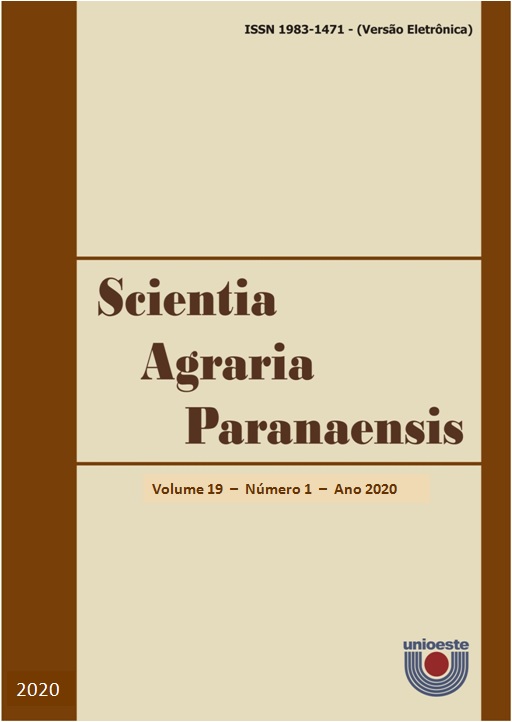Electrical conductivity test for evaluation of the pea seed vigor
DOI :
https://doi.org/10.18188/sap.v19i1.22565Résumé
The electrical conductivity test is routinely used to differentiate the physiological quality of seed lots, and has stood out for its ease of execution, low cost, speed, repeatability, and straightforward interpretation of results. This study aimed to establish a methodology for the electrical conductivity test in pea seeds (Pisum sativum L.) involving seed quantity and seed imbibition periods. The experiment was carried out at the Multidisciplinary Laboratory of the State University of Goiás, the campus of Ipameri Campus, in 2018. Pea seeds (Pisum sativum) stored in the seed laboratory of the same institution were used for this experiment. The completely randomized experimental design with four replications in a 4x6 factorial scheme was used. Four quantity of seeds (25, 50, 75, and 100 seeds) and six imbibition periods (4, 8, 12, 16, 20, and 24 h) at 25ºC were evaluated. The electrical conductivity test was performed with four replicates of 25, 50, 75, and 100 seeds each, weighed on a precision scale (0.001g) and placed in disposable plastic cups, with a capacity of 200 mL, containing 75 mL of distilled water. The cups were then kept in a BOD chamber, set at 25°C, and the measuring was performed after 4, 8, 12, 16, 20, and 24 h of imbibition with a conductivity meter and results were expressed in μS cm-1 g-1. There were no significant results for the interaction between the number of seeds and the imbibition time. Significant results were observed only for the individual effects of each factor. It is recommended to use 100 seeds of Maria pea, and 24 h for the electrical conductivity test.
Téléchargements
Publié-e
Comment citer
Numéro
Rubrique
Licence
Aviso de Direito Autoral Creative Commons
Política para Periódicos de Acesso Livre
Autores que publicam nesta revista concordam com os seguintes termos:
1. Autores mantém os direitos autorais e concedem à revista o direito de primeira publicação, com o trabalho simultaneamente licenciado sob a Licença Creative Commons Attribution que permite o compartilhamento do trabalho com reconhecimento da autoria e publicação inicial nesta revista.2. Autores têm autorização para assumir contratos adicionais separadamente, para distribuição não-exclusiva da versão do trabalho publicada nesta revista (ex.: publicar em repositório institucional ou como capítulo de livro), com reconhecimento de autoria e publicação inicial nesta revista.
3. Autores têm permissão e são estimulados a publicar e distribuir seu trabalho online (ex.: em repositórios institucionais ou na sua página pessoal) a qualquer ponto antes ou durante o processo editorial, já que isso pode gerar alterações produtivas, bem como aumentar o impacto e a citação do trabalho publicado (Veja O Efeito do Acesso Livre).
Licença Creative Commons
Esta obra está licenciada com uma Licença Creative Commons Atribuição-NãoComercial-CompartilhaIgual 4.0 Internacional, o que permite compartilhar, copiar, distribuir, exibir, reproduzir, a totalidade ou partes desde que não tenha objetivo comercial e sejam citados os autores e a fonte.


